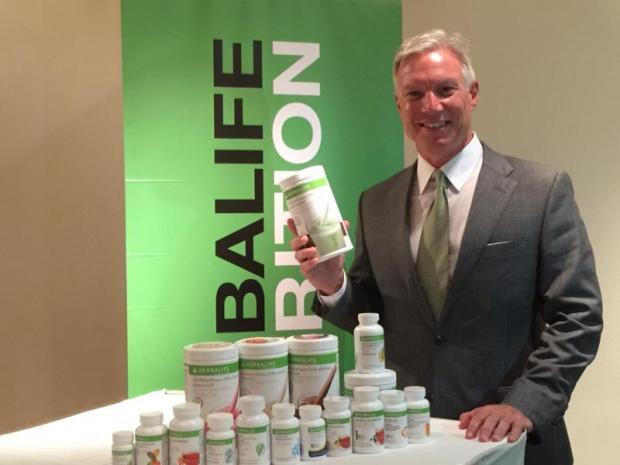
Global nutrition supplement company Herbalife Ltd is confident its expansion to Thailand will be the path to making Asia-Pacific its biggest market in the future.
Chief operating officer Richard Goudis said Thailand has growth potential for Herbalife because of four global trends related to health concerns: obesity, ageing population, healthcare costs and the rise of entrepreneurs and millennials.
Over 26% of Thailand's population is overweight. By 2020, 19% of the population will be elderly.
"These four mega trends are the fuel for our company's growth, and Thailand is no exception," Mr Goudis said during a visit to Bangkok last week.
Herbalife will grow its business through the four mega trends, better access to potential customers and developing more new products.
The company will launch a smaller size of Herbalife canisters to cater to customers who don't have money to pay for regular packages.
Herbalife canisters for low sodium, low sugar and optimal fat will be marked with the heart health logo.
Herbalife started business in Thailand 20 years ago, focusing mainly in Bangkok. The provincial market is driving growth after the company partnered with 7-Eleven, gaining access to the convenience store's supply chain and distribution points.
Customers can access Herbalife products at 10,000 branches of 7-Eleven across the country.
The partnership strategy is very successful in Mexico, with sales accounting one-third of total sales in the country.
"Northern Brazil looks like upcountry Thailand. The roads are not very good, so there are similar opportunities to create more access points," Mr Goudis said.
Herbalife is available in 94 countries. The company has not expanded to any new markets over the past three years as it chose to pursue more opportunities to go deeper into existing markets.
"People are gaining weight and living a more sedentary lifestyle, with the fast food market growing," Mr Goudis said. "Some smoke more when they are stressed with work. All these things have slowed down metabolisms, giving a rise to ailments like diabetes. Herbalife is just trying to offer an alternative, but it is not a magic pill."
Sales of Herbalife in Asia-Pacific were about US$1 billion (34.1 billion baht) in 2016 while global sales were $4.5 billion. The company expects global sales to grow to $5 billion this year.
He said the company wants to see the Asia-Pacific region as the biggest market over the next 3-5 years, from the second-largest at this point.
Given the megatrends and its plans, the company expects sales growth in the Asia-Pacific region will be in the high single digits this year.
"We want Herbalife to be known as a purpose-driven company, distributed under a healthcare platform," Mr Goudis said.
The company is looking to introducing new pre- and probiotic lines. The products will be tested in the US this year.
"We want to be viewed as an extension of the Thai government's wishes and desire to educate consumers about nutrition, a partner in the mission," Mr Goudis said. "I would love to see obesity rate start to decline, and people be more educated about their behaviour and lifestyle as it relates to that, and for Herbalife to be a catalyst to that result."